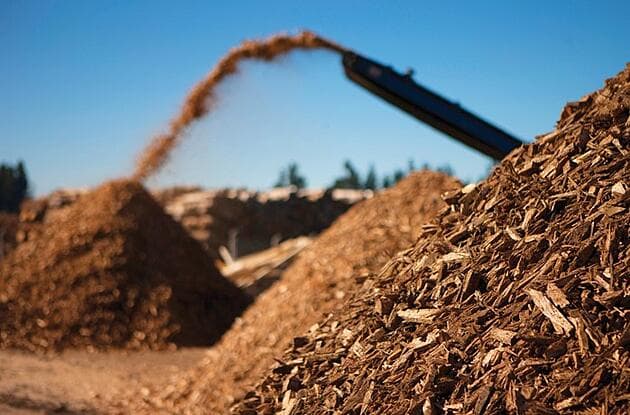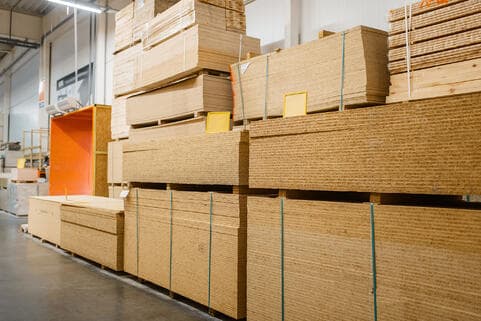Wood recycling: from waste to resource

WOOD IS OMNIPRESENT
Have you ever asked yourself how many everyday items are made of wood? It is probably much more than you think, and for good reason: wood is a highly versatile resource, used to create a variety of industrial and consumer products, ranging from furniture, panels, construction materials, paper-cardboard, and others. One of its main applications lies in particleboard manufacturing, an industry that is very promising and experiencing high demand but is facing challenges at the same time.
With today’s skyrocketing prices for fresh wood and raw material bottlenecks, money is no longer growing on trees but can be found in recovered lumber and recycled wood content. Given the current virgin material prices in the wood segment and increasing environmental concerns, we need to turn to wood waste as a resource and gateway to new, sustainable business opportunities.
Jose Matas - Segment Manager Wood

NO LONGER A WASTED RESOURCE
Today, most waste wood is used for fuel, with only a small portion recycled. But the trends are starting to shift. Wood recycling rates greatly vary from country to country and depend on the respective markets and infrastructures.
In the UK, 4 million tonnes of waste wood are generated per year, of which only 1.3 million tonnes are recycled, 2.5 million tonnes turned into biomass and the rest exported. We see a similar scenario in southern Europe: Italy collects about two million tonnes of wood per year and recycles 63% of this amount into panels. This results in two million tonnes of CO2 savings and less wood waste being landfilled. In the US, on the other hand, approximately 18.1 million tonnes of wood waste have been generated, and only 17% of the amount was recycled in 2018.
The discrepancy across countries is significant and leaves opportunities untapped. Particleboard manufacturers who have tapped into this potential by integrating waste wood sorting solutions in their plants or supply chain have benefitted from tremendous cost savings and a constant source of input material.
WOOD IS GOOD, RECYCLED WOOD IS BETTER
High-purity recovered wood chips offer the panelboard industry undeniable advantages. First and foremost, recycled wood is up to 40% cheaper than fresh wood and generally dryer, leading to energy savings during the drying stage of the particleboard manufacturing process. Moreover, recycling waste wood prolongs material circulation and reduces the need for additional lumbering. While higher grades of wood chips can be used for material recycling, lower-grade waste wood can replace conventional fossil energy sources. If we keep recycled wood in continuous reuse, we can close the loop in particleboard production, therefore supporting the transition from a linear to a circular way of waste wood management.
WASTE WOOD GRADES
In the UK, recovered lumber is classified into the following four categories defined by the Waste Wood Ordinance:
Grade A: Non-processed wood and the cleanest among the wood classes.
Grade B: Processed wood and composite material.
Grade C: Contaminated wood used as biomass for energy production.
Grade D: Hazardous waste that has to be disposed of and treated separately.
Grades A and B materials are usually found in waste wood and can be used to produce industrial and consumer products. Materials of grades C and D on the other hand are only suitable for energy recovery.

MEETING FUTURE DEMAND
The benefits outlined previously are no stranger to the industry.
Wood-based panel manufacturers are on the quest to increase recycled content in their production processes to ensure economic viability and reduce their dependency on virgin material. At the same time, they are looking to maximise output and keep, or even extend, their margins that have gotten increasingly thin because of the historic-high prices for fresh wood. Consequently, they are asked to expand their production volumes to cover their costs and operate profitably.
Unfortunately, this is easier said than done. The lack of infrastructure in some countries, combined with material shortages, makes it hard for producers to access material and drive up production. While the waste wood collection, sorting, and recycling in central Europe are more developed, there is still a lot of room for improvement. Countries outside of Europe can use these best practices as a beacon to develop and invest in waste wood recycling. Establishing a well-functioning and smooth supply chain that includes waste wood recycling is vital to the future of wood-based products and the circular economy.
GET IT SORTED
Having worked in the wood-based panel industry for 15 years, I experienced firsthand that particleboard manufacturers aim to increase recycled content. What sounds like a hard-to-achieve goal is feasible when the right processes and sorting technology are in place.
Unlike conventional methods, it takes a leap of faith to upgrade processing capability. Since joining TOMRA, I have experienced the potential our sorting machines offer the industry. I like to call them “recovery drivers” because they are an indispensable component of any recycling or manufacturing plant. Equipped with the latest technologies, they allow for the recovery of high-purity fractions from waste wood after it has been collected and chipped. Recovery is fine, but only high-precision, sensor-based sorting of non-processed wood provides the necessary secondary raw materials for the manufacturing of high-quality particleboards. Therefore, removing all contaminants and separating the stream by wood grade is decisive.
GRADE A PERFORMANCE
Wood-based panel manufacturers looking to manufacture high-quality particleboards target a clean Wood A fraction in the sorting process because it is the only material class that delivers the necessary purity and features.
TOMRA’s x-ray transmission and near- infrared (NIR) technology remove contaminants such as inert materials and metals, and its newly developed wood chip application has enabled the accurate separation of Wood A and Wood B. With trained neural networks, sorting software based on deep learning can detect, analyse, and separate wood grades, and even recover medium- density fibreboard (MDF) fractions from the processed waste wood stream. But the neural network does not stop there: its collective knowledge grows with every object it has scanned and sorted. The pool of information constantly grows and enables the system to perform tasks more effectively over time — even with constantly changing material compositions.
Deep learning technology advances sensor-based sorting and offers a future- proof solution. Unleashing its power will enable us to find solutions for current difficult-to-sort materials and support us in bringing recycling to the next level.
FROM 360ᵒ TO 420
As the first part in a column series, we have highlighted the benefits recycled waste wood has to offer the wood-based panel industry. In the following editions, we will dive deeper into the points outlined here, explore the technologies used, reveal the power artificial intelligence (AI) and deep learning holds for wood recycling, and explore the differences in the global marketplace.
Don’t forget: Wood is good, recycled wood is better.
Exclusively published by Panels and Furniture Asia
References:
Wood Recyclers Association. <https://woodrecyclers.org/>
Rosewood 4.0. Rilegno: National Wood Collection and Recycling Network
United States Environmental Protection Agency. Facts and Figures about Materials, Waste and Recycling.
